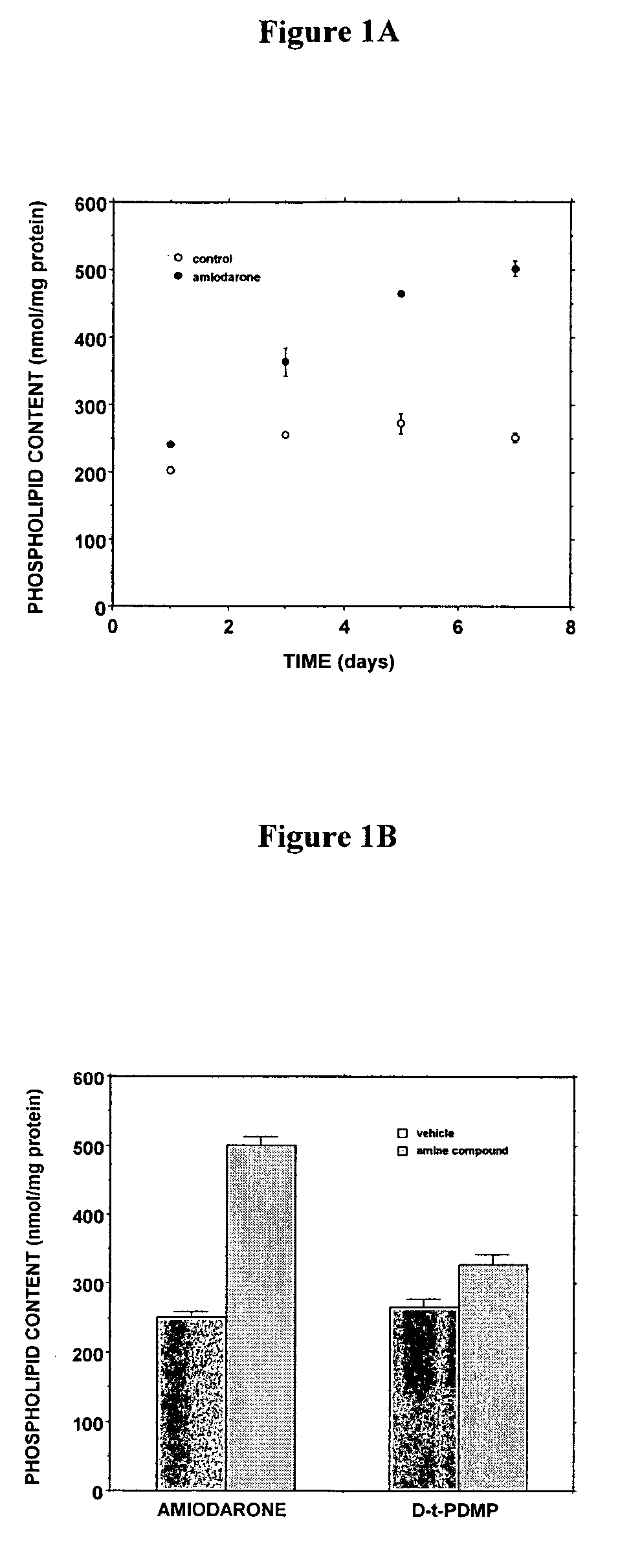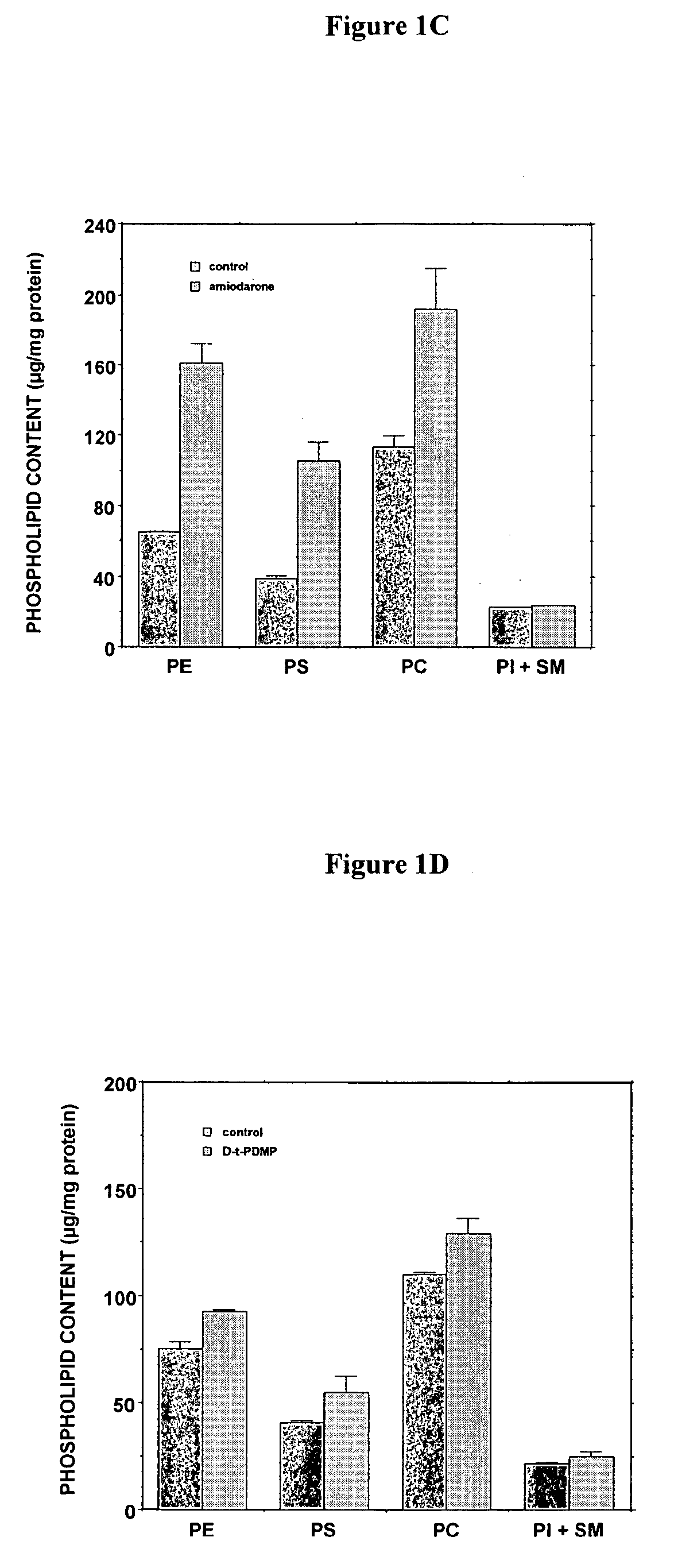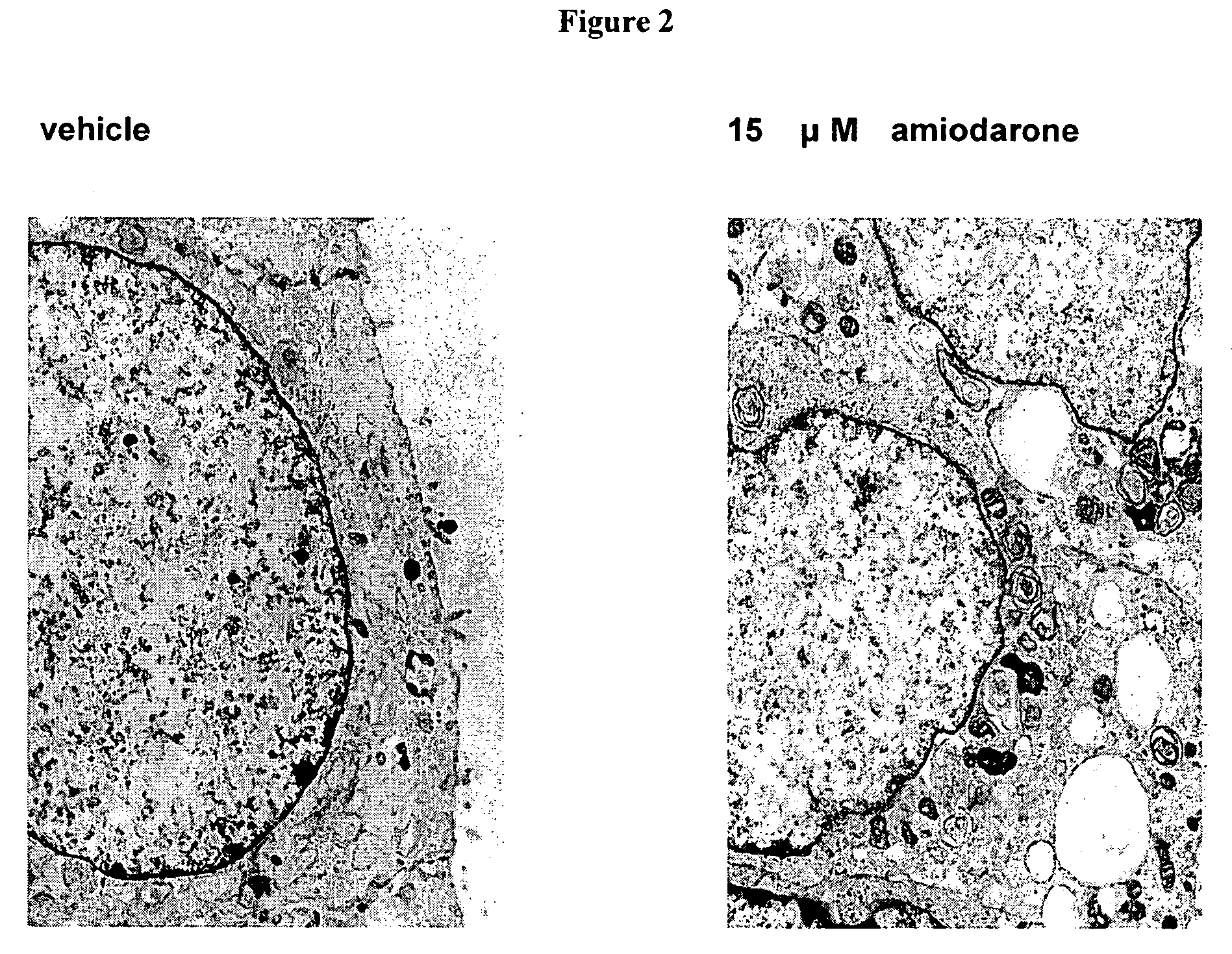Methods and compositions for using alveolar macrophage phospholipase A2
a technology of macrophages and phospholipids, which is applied in the field of methods and compositions for using alveolar macrophage phospholipase a2, can solve the problems of remission, abnormal accumulation of phospholipids in lung tissue, and underlying causes of disorder that remain poorly understood, so as to reduce the incidence of angina, reduce the presence of foam cells, and increase the degradation of phospholipid components.
- Summary
- Abstract
- Description
- Claims
- Application Information
AI Technical Summary
Benefits of technology
Problems solved by technology
Method used
Image
Examples
example 1
Materials and Methods
[0243]The following Example provides exemplary materials and methods employed to determine the expression and function of LPLA2.
Reagents
[0244]Phosphatidylethanolamine (PE), 1,2-dioleloyl-sn-glycero-3-phosphorylcholine (DOPC) and 1,2-dipalmitoyl-sn-glycero-3-phosphorylcholine (DPPC) were obtained from Avanti Polar Lipids (Alabaster, Ala.). Dicetyl phosphate and monoclonal anti-c-myc clone 9E10 mouse ascites fluid were purchased from Sigma (St. Louis, Mo.); MJ33 was from Calbiochem (San Diego, Calif.); N-Acetyl-D-erythro-sphingosine (NAS) was from Matreya (Pleasant Gap, Pa.). BCA protein assay reagent was obtained from Pierce (Rockford, Ill.).
Isolation of Rat Cells and Tissues
[0245]Respiratory disease-free female Wistar rats (125-150 g) were obtained from Charles River Laboratories, Inc. (Portage, Mich.) and housed under specific pathogen-free conditions. For isolation of alveolar macrophages by broncheoalveolar lavage, lavage buffer consisting of 0.15 M NaCl, 2.7...
example 2
LPLA2 is Responsible for Pulmonary Surfactant Catabolism
[0259]The following Example provides studies which show the robust expression of an acidic lysosomal phospholipase A2 within the alveolar macrophage, the primary site of surfactant degradation. The low expression and activity of this phospholipase A2 in a model of pulmonary alveolar proteinosis demonstrated that this phospholipase likely mediates human disorders associated with abnormal surfactant metabolism.
[0260]A series of tissues from the Wistar rat were isolated and assayed for lysosomal phospholipase A2 activity. To assess the distribution of LPLA2 transacylase activity in rat tissues and macrophages, the soluble fraction obtained from each tissue (20 μg of protein / ml) and alveolar macrophages (AM), peritoneal macrophages (PM), or peripheral blood monocytes (PBM) (2 μg of protein / ml) were assayed in citrate buffer, pH 4.5, with 40 μM N-acetyl-sphingosine (NAS) and the enzyme activity was measured as the formation of 1-O-a...
example 3
CADs Induce Phospholipidosis by Inhibiting LPLA2
[0271]The D-threo-1phenyl-2-decanoylamino-3-morphilino-propanol family of agents are a family of amino ceramide-like compounds that have been shown to be useful in the treatment of glycosphingolipidoses (see e.g., U.S. Pat. Nos. 6,569,889; 6,518,259; 6,255,336; 6,098,631; 6,051,598; 6,040,332; 6,030,995; 5,952,370; 5,945,442; 5,916,911 for description of such compounds and methods of making and using the same). It was thought that the LPLA2 of the present invention may also be a target site for the therapeutic activity of these this family of agents. The addition of PDMP to the LPLA2 assay showed that these compounds potently inhibited the transacylase and phospholipase A2 activities of the enzyme in the mid-micromolar range (FIG. 1A-1D). It had previously been reported that the incubation of CHO cells with PDMP induced lysosomal lamellar inclusions consistent with the development of phospholipidosis [Rosenwald and Pagano, J. Lipid. Re...
PUM
| Property | Measurement | Unit |
|---|---|---|
| pH | aaaaa | aaaaa |
| molecular mass | aaaaa | aaaaa |
| molecular weight | aaaaa | aaaaa |
Abstract
Description
Claims
Application Information
 Login to View More
Login to View More - R&D
- Intellectual Property
- Life Sciences
- Materials
- Tech Scout
- Unparalleled Data Quality
- Higher Quality Content
- 60% Fewer Hallucinations
Browse by: Latest US Patents, China's latest patents, Technical Efficacy Thesaurus, Application Domain, Technology Topic, Popular Technical Reports.
© 2025 PatSnap. All rights reserved.Legal|Privacy policy|Modern Slavery Act Transparency Statement|Sitemap|About US| Contact US: help@patsnap.com



